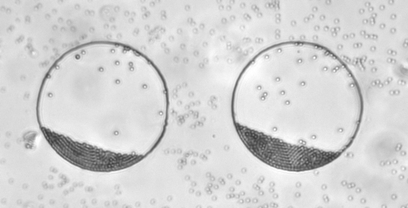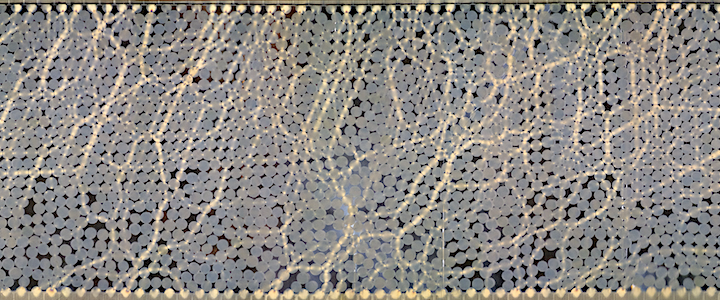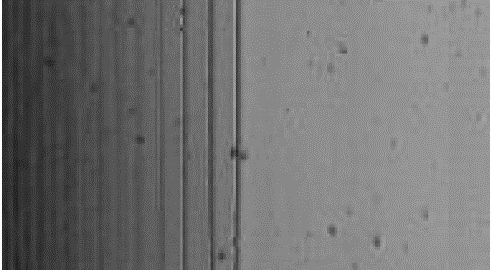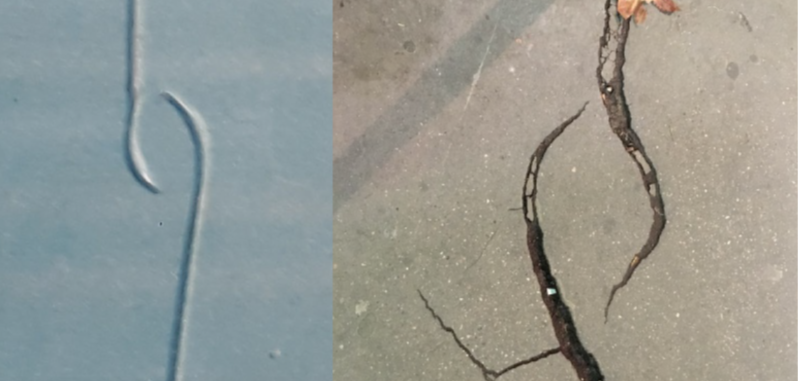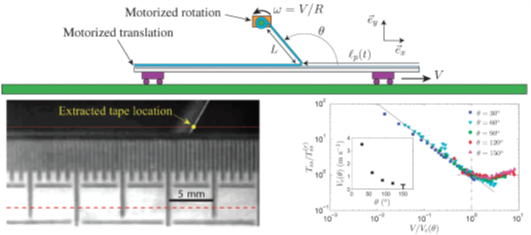Mechanics of interfaces |
|
We seek a physical understanding of the mechanical, non-linear behavior of solid materials, with particular interest on the mechanisms underlying plastic deformation and rupture. A variety of materials is used: crystalline solids, granular matter, glassy polymers or elastomers, adhesive, paper, plaster, etc. The basic mechanisms involved in the observed behavior are numerous and diverses: thermodynamics (pressure solution, thermally activated rupture, capillary cohesion), the disorder and heterogeneity of the bulk material and interfaces, dissipative mechanisms (viscoelasticity, structural rearrangements), an external mechanical solicitation. Many parallels can be drawn between our studies and problems of geophysics, such an earhquakes dynamics or pattern of fracture. |
|
Members: Bérut, Antoine Colombani, Jean |
|
Highlights |
Brownian granular suspensionsWe study the flowing dynamics of “Brownian granular suspensions”, made of colloidal particles, dense enough to settle and form well defined piles, but small enough to be sensitive to thermal noise. This system is interesting as it provides an intermediary states between athermal granular materials and (highly) thermal colloidal suspensions. Brownian granular flows down heaps, Bérut et al., Phys. Rev. Lett. (2019). |
|
Seismic laws in a granular experimentFor the first time, an experimental system has been able to reproduce quantitatively the main laws of seismicity. It consists of a layer of photoelastic disks that is compressed and slowly sheared within a cylindrical cell. Frictional failures are recorded and their statistics follow in details the phenomenological relations describing seismicity Continuously sheared granular matter reproduces in detail seismicity laws, Lherminier et al., Phys. Rev. Lett. (2019). |
|
Micro stick-slip instability in adhesive tapesPeeling adhesive tapes often leads to a stickslip instability which corresponds to the unstable propagation of a peeling front. We discovered that the microinstability occurring during the slip phase is controlled by an energy balance between kinetic energy and bending energy of the tape backing close to the peel front. Bending to kinetic energy transfer in adhesive peel front microinstability, de Zotti et al., Phys. Rev. Lett. (2019). |
Successive fronts of the microstickslip peeling of an adhesive tape. |
Interacting cracks: Attraction and repulsionA numerical study of two en-passant cracks describes the conditions for crack repulsion and attraction, instead of cracks connecting tip to tip. The study explains why such trajectories are commonly observed by geologists, and provides clues for controlling the conductivity of thin metallic films used in stretchable electronics when enduring multi-cracking. Interacting cracks obey a multiscale attractive to repulsive transition, Schwaab et al., Phys. Rev. Lett. (2018). |
.
|
Inertial regime of adhesive tapeWe study experimentally and explain theoretically a new regime of unstable dynamics observed during the high speed peeling of pressure sensitive adhesives. Taking into account the kinetic energy of the moving tape ligament, we are able to predict the change of behavior observed at high speeds as well as the effect of peeling angle on the peeling dynamics. Inertial and stick-slip regimes of unstable adhesive, M.-J. Dalbe et al., Soft Matter (2016). |
Setup, typical image from highspeed movie and main result. |
More highlights |


















